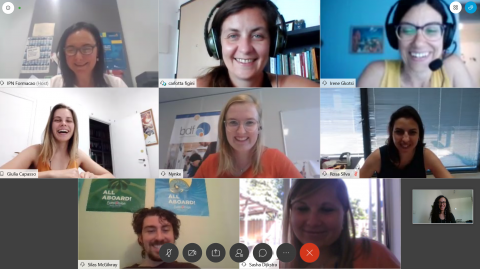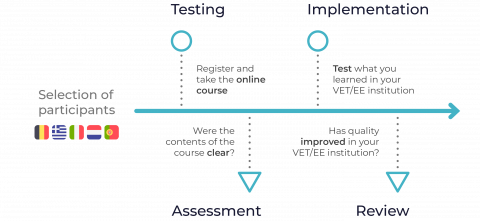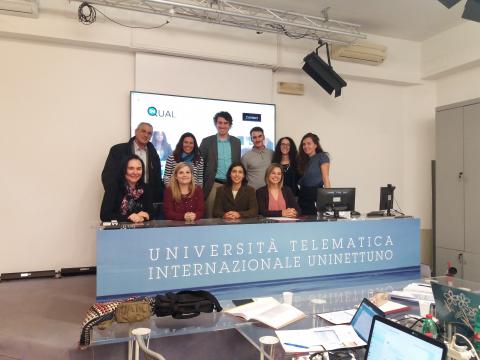5.2 - Make your results publicly available
Abstract
The procedure of the review has taken place and the results are available. You, as QM, provide
information on the above results and make them publicly available especially for the stakeholders,
who were included in the previous phases. In order for the VET organisation to be aligned with quality
standards, it has to share and use the data collected among relevant stakeholders and at the same
time provide evidence to policy makers that the review has taken place.
Why is this important for you as a QM?
- to prove whether continuous improvement has been achieved during the previous period of time.
- to get feedback from the dissemination of the results from the relevant stakeholders. This will provide chances or challenges for further improvement.
How should I implement the action?
You, as QM, in cooperation with the VET’s general manager decide to disseminate the results and
present:
- the frequency of the review’s implementation
- the level of the review’s dissemination (locally, regionally)
- the means used for the review’s publication (website)
- the possibility of feedback needed (from stakeholders)
You have to establish a process regarding the above decisions in order to monitor and apply the
decisions taken. The process could be developed as in the example presented below:
| Results | Dissemination level | Stakeholder | Means | Feedback |
|---|---|---|---|---|
| Annual management review | Restricted | Owner, funder, general manager | Set a specific folder | Comments by stakeholders |
| Trainees’ satisfaction | Publicly available | All | Marketing campaign | More funds, more engagement |
Transparency of processes and results of quality assessments is not automatically ensured, neither
for internal nor external stakeholders and customers. Therefore, all assessment activities need to be
supplemented by an active publication and communication strategy. This strategy must define who
can access what information and through which medium, since owing to their confidential nature, not
all assessment data can be given to all stakeholders or made available via the Internet to the general
public. Generally, a weighing of interests has to be made, between protection rights (of teachers and
trainers in particular) and the requirement for the greatest possible transparency.
The following guidelines might help establish rules for the communication of assessment results in
your organisation:
- (a) personal assessments of teachers are for their individual eyes only
- (b) results from classroom observation should be kept confidential and discussed only between the teacher and the responsible supervisor
- (c) assessment of classes and programmes might be circulated via the intranet of the VET institution, if anonymity of personal data is guaranteed and discussed widely in quality meetings with internal and external stakeholders
- (d) aggregated results from surveys should be made accessible via the public website, thus supporting positive marketing of the VET Provider.
How should I know if I have successfully implemented this action or to what extent?
The successful implementation of this action depends on the feedback from the stakeholders.
If their evaluation is good, that means that:
- the whole strategy was successfully followed (and that strategy’s results were publicly available)
- should be carried on, in order to keep bringing positive results
- the VET organisation will increase its efficiency/profitability and reputation
- the VET organisation will decide to invest this income to develop more qualitative trainings
- the VET organisation will attract more students via marketing campaigns
If stakeholders give a not so good evaluation, that means that you along with the general manager
and the director of education should:
- identify what went wrong and could be corrected or improved without losing any of the quality that has been set so far;
- reconsider the strategy adopted;
- check what competitors have done in a same situation;
- establish a new strategy
Links & further readings (includes also third-party resources- videos, etc.):
- Cedefop 2015, Handbook for VET providers [https://www.cedefop.europa.eu/files/3068_en.pdf]. [Last accessed 15/04/2020]
- Matthew A Barsalou, 2015, “The Quality Improvement Field Guide: Achieving and Maintaining Value in Your Organization”, CRC Press, 208 pages https://www.amazon.com/Quality-Improvement-Field-Guide-Organization-dp-1498745741/dp/1498745741/ref=mt_paperback?_encoding=UTF8&me=&qid=1588672617



